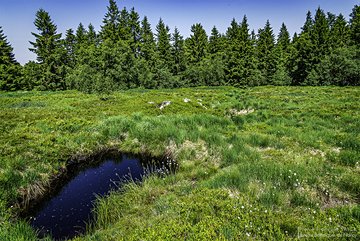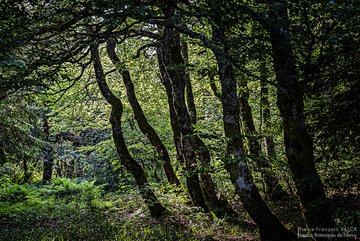Natural Environments
Back
to
top
The Bogland
Within the Haut Chitelet High Altitude Garden, a broad peaty area is the object of an overall protection. Towards the end of its evolution, this bogland was at a drying stage – reinforced by former drainage processes and the building of military structures, such as tranches – and being colonised by shrubs and trees (willows, birches, spruces...).
The High-Altitude Beech Forest
Transitioning from the mountain level to the subalpine level is usually characterised by the disappearance of beech trees as well as other deciduous trees in favour of conifers. However, in the Vosges, the number of conifers gradually declines, whereas beeches with twisted trunks gain ground. This is due to particular climatic conditions: violent and frequent westerlywinds, heavy cloud cover – with persistent freezing fogs – and accumulated snowfalls that are more easily tolerated by beeches as they shed their leaves in winter, contrary to conifers that keep their thorns...




